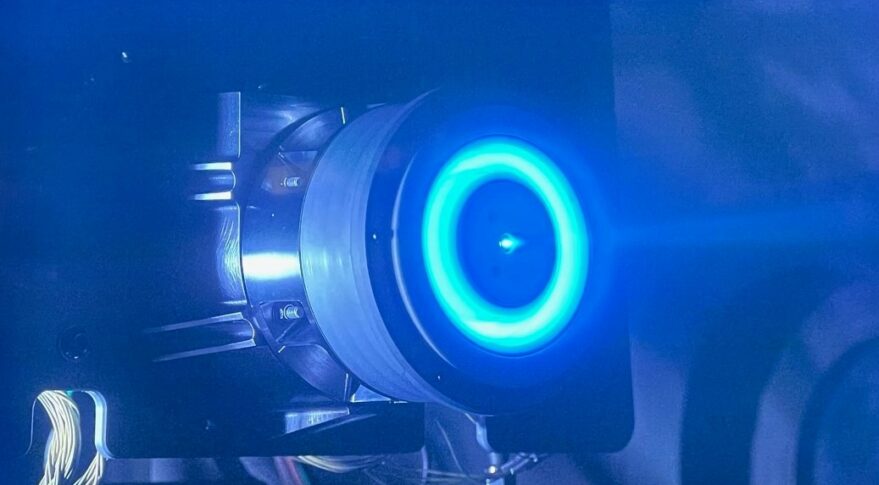
SpaceLogistics, a satellite-servicing firm owned by Northrop Grumman, has two spacecraft in orbit providing life-extension services to two Intelsat geostationary satellites. The firm’s Mission Extension Vehicles (MEVs) have been docked with Intelsat’s 901 and 10-02 communications satellites since 2020 and 2021, respectively.
Going forward, SpaceLogistics plans to launch a more advanced robotic vehicle to refuel and repair satellites without being attached to a single client for years at a time. The company envisions leveraging robotic servicing technology to manufacture satellites in space eventually.
However, there’s a cloud hanging over the industry in the form of geopolitical tensions over the use of anti-satellite weapons and a lack of clear rules on what constitutes threatening behavior in space, in contrast to peaceful commercial activities.
Companies that are going to be operating robotic vehicles in orbit want transparency so that “everybody knows you’re on the commercial side of that curve,” SpaceLogistics vice president Joe Anderson said Aug. 24 at a space policy conference.
“We have to work together to help establish norms,” he said.
A key problem for the satellite-servicing industry is that major space powers can’t agree on a definition of a space weapon.
In a draft treaty proposed in 2008, China and Russia define a weapon in space as an object that can damage, destroy or disrupt the normal functioning of a spacecraft. But the United States is not on board with that language, said Eric Desautels, acting deputy assistant secretary of state for arms control, verification and compliance.
“The ‘damage and destroy’ part you can kind of understand,” but saying that a system that disrupts operations is a weapon would essentially put servicing vehicles in that category, he said.
“You could make an argument that an on-orbit servicer or an active debris removal payload would be able to disrupt something in space,” Desautels said. “So really, this challenge is figuring out how to not constrain all of these commercial entities, the dual use capabilities. Because I think that is something that could clearly happen if we were to go down the path of the current draft.”
Such dual-use concerns are not new. The Soviet Union regarded NASA’s space shuttle fleet as potential anti-satellite weapons because the shuttles could change orbital planes and grapple satellites with astronauts and robotic arms.
With the advent of commercial in-orbit servicing and orbital debris removal ventures, the United States and a growing number of spacefaring countries are hashing out these issues with fresh urgency under a United Nations working group focused on reducing space threats through norms. Discussions started this year in Geneva and will continue into 2023, said Desautels.
Satellites with robotic arms or other grappling devices will be hard to categorize, he said. An example is the U.K.’s RemoveDebris spacecraft designed to snare a small satellite with a net and use a harpoon to grab it.
In the absence of global rules, the satellite servicing industry is developing best practices and standards under CONFERS, or Consortium for Execution of Rendezvous and Servicing Operations. The group has more than 50 member companies from multiple countries.
SpaceLogistics’ dockings with Intelsat were the first between two commercial satellites. Anderson said the company is breaking new ground when it comes to the licensing of these activities.
“We worked closely together with the State Department, the Federal Communications Commission and [the National Oceanic and Atmospheric Administration] to find a way to get through our national licensing process,” he said.
The first MEV docking with Intelsat-901 occurred in a graveyard orbit about 300 kilometers above GEO, Anderson said. The second occurred in the geostationary orbit while IS-10-02 was in service, broadcasting to over 18 million users.
The MEV operations helped CONFERS develop recommended standards for safe in-space servicing, he said. The consortium suggests that “servicers should perform initial first-time in-orbit checkout procedures and demonstrations at altitudes that minimize the consequences of mishaps on internationally recognized protected orbital zones.”
Anderson’s point was that the industry is trying to bring to market new types of services that previously haven’t been licensed and for which norms of behavior don’t exist.
These are issues that the industry needs to be solved sooner rather than later, said Charity Weeden, vice president of global space policy at Astroscale, a debris-removal and on-orbit services company currently flying a demonstration mission.
“We need a safe space environment so we can grow our space economy, conduct operations peacefully and see everyone thrive,” she said. “Uncertainty is bad for investment and for business.”
Sandra Erwin covers military space for SpaceNews. She is a veteran national security journalist and former editor of National Defense magazine.
“On National Security” appears in every issue of SpaceNews magazine. This column ran in the September 2022 issue.